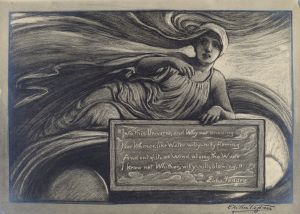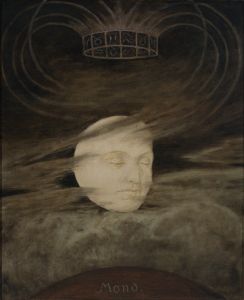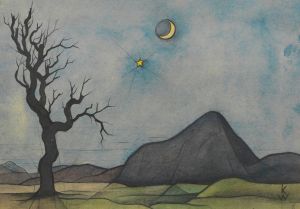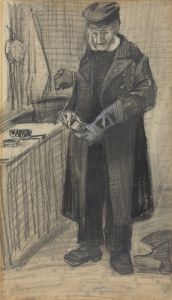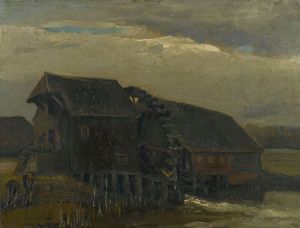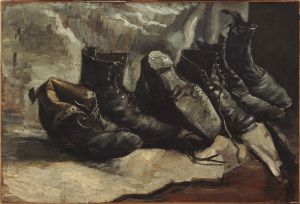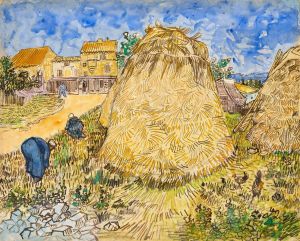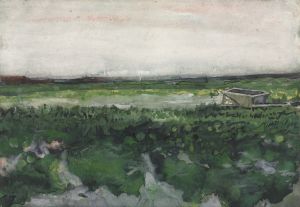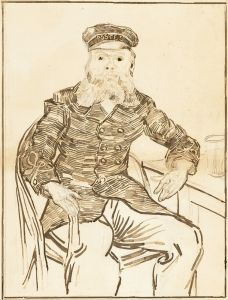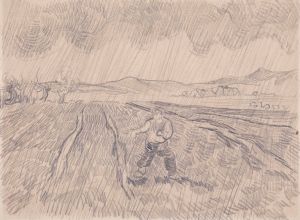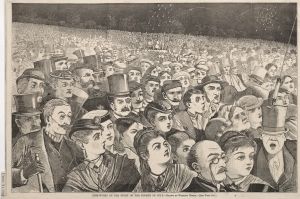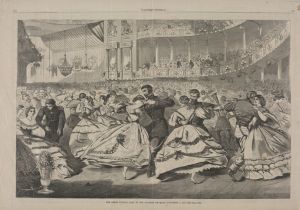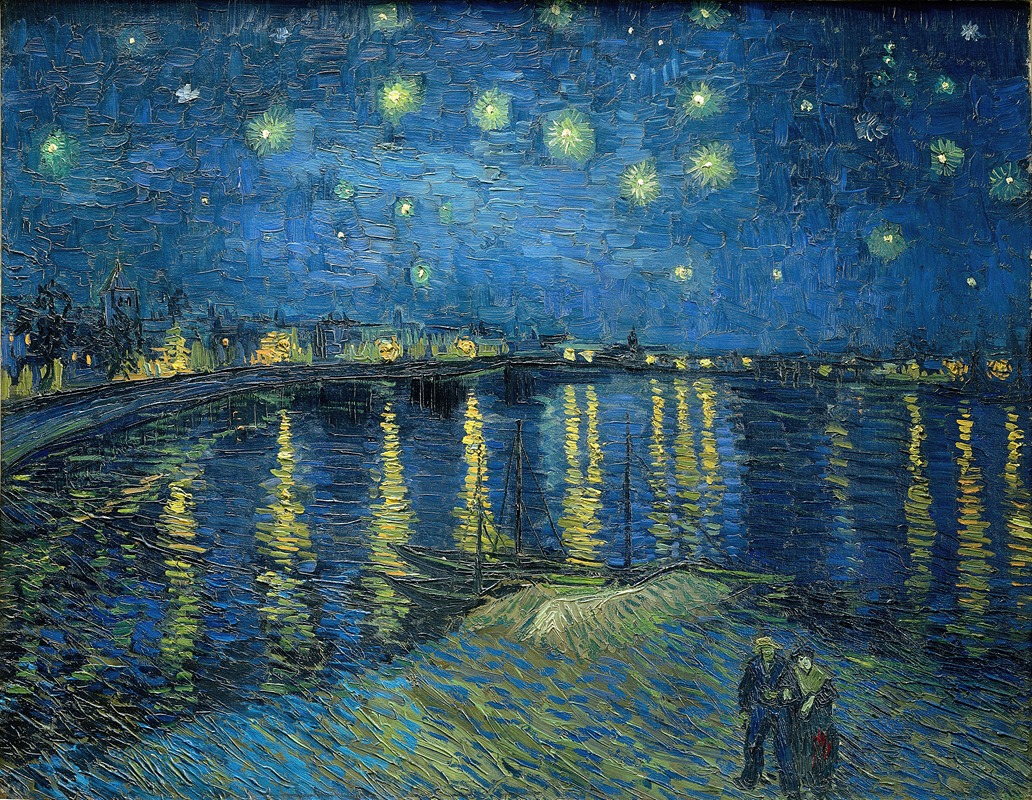
Starry Night Over the Rhone
A hand-painted replica of Vincent van Gogh’s masterpiece Starry Night Over the Rhone, meticulously crafted by professional artists to capture the true essence of the original. Each piece is created with museum-quality canvas and rare mineral pigments, carefully painted by experienced artists with delicate brushstrokes and rich, layered colors to perfectly recreate the texture of the original artwork. Unlike machine-printed reproductions, this hand-painted version brings the painting to life, infused with the artist’s emotions and skill in every stroke. Whether for personal collection or home decoration, it instantly elevates the artistic atmosphere of any space.
"Starry Night Over the Rhone" is an oil painting by the renowned Dutch artist Vincent van Gogh. Completed in September 1888, the painting captures a nocturnal view of the Rhône River in the city of Arles, located in the southern part of France. This work is part of Van Gogh's broader exploration of night scenes, which also includes his famous "The Starry Night" painted later in 1889.
The painting measures 72.5 cm by 92 cm (28.5 in by 36.2 in) and is currently housed in the Musée d'Orsay in Paris, France. Van Gogh created "Starry Night Over the Rhone" during his stay in Arles, a period marked by prolific output and significant artistic development. He moved to Arles in February 1888, seeking the bright light and vibrant colors of the region, which he believed would enhance his work.
In "Starry Night Over the Rhone," Van Gogh depicts the tranquil waters of the Rhône under a star-filled sky. The composition features the reflections of gas lighting from the town along the riverbank, creating a shimmering effect on the water's surface. The stars and the gaslights are rendered in bright, vivid colors, contrasting with the darker tones of the night sky and the river. This interplay of light and color is a hallmark of Van Gogh's style, showcasing his ability to convey emotion and atmosphere through his use of color and brushwork.
The painting also includes a couple walking along the riverbank in the foreground, adding a human element to the serene landscape. This inclusion of figures in the scene is relatively rare in Van Gogh's night paintings, making "Starry Night Over the Rhone" unique in this regard.
Van Gogh's technique in this painting involves the use of bold, expressive brushstrokes, which create a sense of movement and texture. The stars and their reflections are depicted with swirling, almost hypnotic patterns, a precursor to the more exaggerated swirls seen in "The Starry Night." The use of impasto, where paint is applied thickly to the canvas, adds a tactile quality to the work, enhancing its visual impact.
"Starry Night Over the Rhone" reflects Van Gogh's fascination with the effects of light and his desire to capture the beauty of the night. In a letter to his brother Theo, Van Gogh described his excitement about painting night scenes, stating that he found the night "more richly colored than the day." This sentiment is evident in the vibrant hues and dynamic composition of the painting.
The painting is also significant for its place within Van Gogh's broader body of work. It exemplifies his innovative approach to color and light, as well as his ability to infuse his landscapes with emotional depth. "Starry Night Over the Rhone" stands as a testament to Van Gogh's artistic vision and his enduring influence on the world of art.
In summary, "Starry Night Over the Rhone" is a masterful example of Vincent van Gogh's night scenes, showcasing his unique style and his ability to capture the beauty and emotion of the natural world. The painting remains a beloved and iconic work, celebrated for its vibrant colors, expressive brushwork, and evocative atmosphere.






